The Bear IRL: My Manic Day in a Michelin-Starred Kitchen
June 19, 2024When I arrive I can just about see the back of Harry Kirkpatrick, aka “KP”, the head chef at the Michelin-starred London restaurant, Trinity. It’s 9.40 a.m., and KP is in the kitchen, chopping. Trinity, in the affluent Clapham area—home of the new-age Sloane types—has been here since famed chef Adam Byatt opened it in 2006. It’s consistently featured in the National Restaurant Awards’ top 100 UK restaurants, and has consistently held a Michelin star.
I’ve come to shadow, stalk and flap about in the kitchen, to get a sense of what it actually takes to make it at this level, and to hopefully capture how this specific kitchen operates. KP is of medium build with slicked-back mousy hair and goatee, and speaks with a Norfolk accent. Since leaving culinary college in 2016, he's worked at a three Michelin-star restaurant (Eleven Madison Park, New York), a two Michelin-star restaurant (Alex Dilling at The Cafe Royal, London), before finally becoming head chef at Trinity in 2023, aged 30.
As soon as he clocks my arrival, there is an avalanche of information to compute: He explains that the life expectancy of a restaurant to “remain relevant” at the top is about 10 years, and so Trinity has bucked that trend by being among the country’s best for 18. He explains the entire structure of the place, from chef patron Adam Byatt at the top, to KP at head chef, down through the ranks of the kitchen.
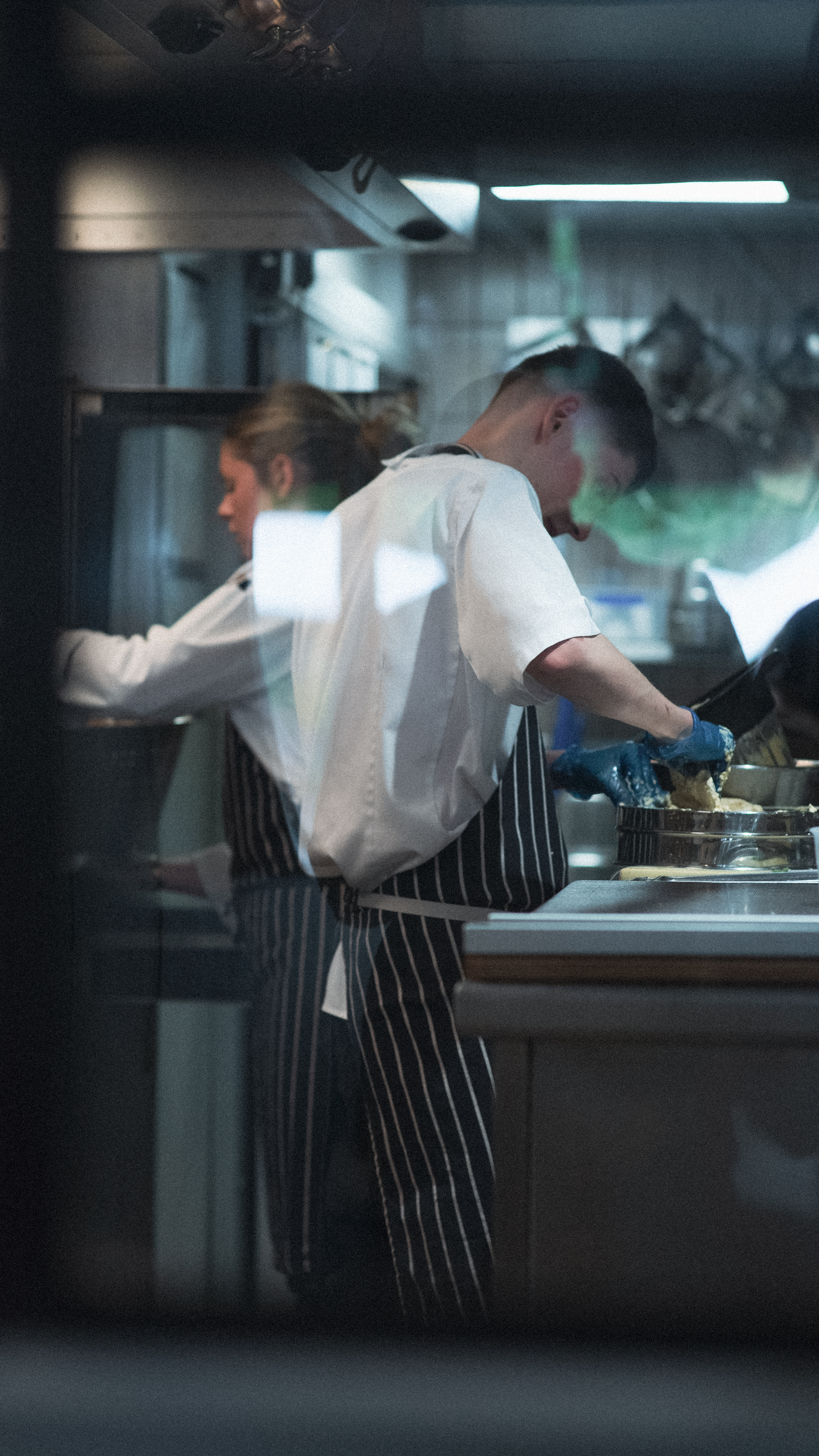
The chefs got here at 8 a.m., he says, and those working double shifts will be here until around 10.30 p.m. or later. As it’s a bit quieter than usual for lunch, KP arrived at 9 a.m.. Byatt allows him some flexibility as long as he keeps the business in mind. “He basically says that this restaurant is my ‘train set’. So all the successes are mine and all the failures are mine,” he says.
He asks if I’m ready to meet the kitchen, then announces, “Gang, this is Nick!” the way a school teacher might introduce some kind of special guest. “Hello, Nick,” everyone replies, loudly. Then he points to each individual chef and introduces me. Today there is Sam, sous chef (louder than the others, devilish, a degree of obsequious affect); Morgan (another voice from Norfolk) and Mahalia (Australian), both junior sous; and Norfolk Ben, chef de partie, who pleasingly says “Are y’right” in a Norfolk twang, but is actually from Ireland. Finally there’s young Ciaran, demi chef de partie and who, besides KP, is perhaps the most intense of the lot. Adam Goff, KP’s right-hand man and the senior sous, is not in today.
The kitchen is in prep mode: the most intense part. They typically have four hours to get everything they can ready before patrons start piling in. The meat man arrives—one of many deliveries, which started from around 4 a.m. this morning—and the kitchen becomes a blur of motion. Among the stash is pork mince and loads of veal feet, which will be used in stocks – the “really high gelatin content” gives the resulting stock a “really nice rich mouthfeel”, KP says. Stocks and sauces are simmering away on the other side of the kitchen.
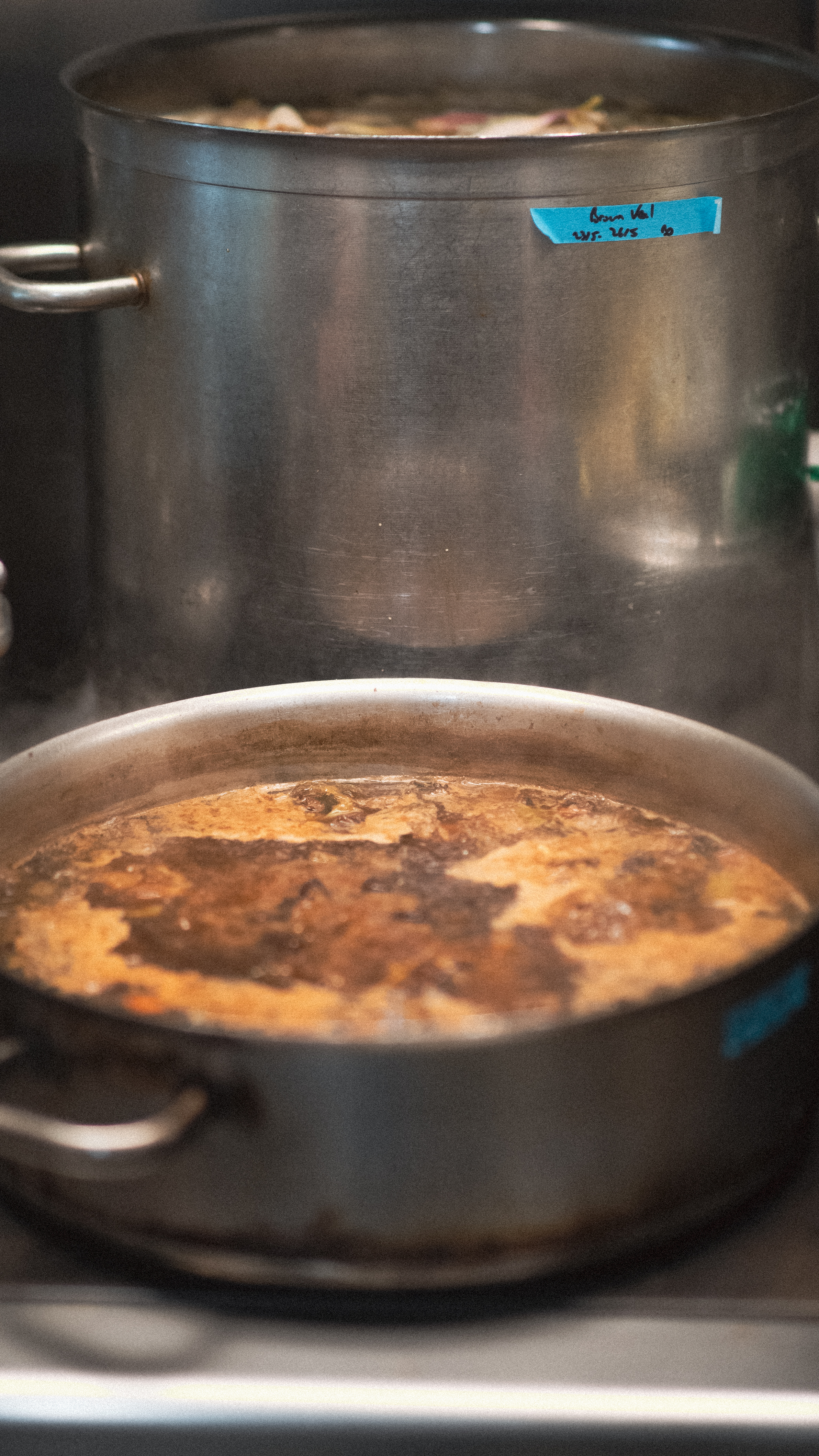
A few minutes later, an older-looking gentleman—a regular customer and multimillionaire venture capitalist—walks into the restaurant and asks KP if he can spend a day in the kitchen scrubbing pots and pans. Maybe another time, he’s told. “He just wants to hang out with us,” KP says. I ask if that’s ever happened before? “Yeah, no. Actually that is probably the first time in my career that that's ever happened,” he says.
The restaurant, I’m told, has 64 suppliers and each one serves a different purpose. This morning, a supplier from the Lake District broke their ankle and the delivery will now be four hours late. “It’s not ideal,” KP says. “We need that stuff in the morning to get it prepped for the day.” I ask how he’s going to solve it. “Just fucking ride it out. Just make sure we have enough stuff,” he says. I find myself fascinated by the high-wire balancing act of deliveries, preparation and service, and how easily everything could go tits-up.
There’s fewer covers for lunch today, which “gives everyone a chance to get on top of their mise en place,” KP says. Mise en place is the set up required before cooking specific dishes. I’m shown some bread proofing in a tray. “The base is made in the style of focaccia. It’s from a sourdough starter,” he explains, before feeling the consistency of it with his fingertips, leaving small mounds on the dough. The recipe has become synonymous with Trinity and hasn’t changed in 18 years, bar a few tweaks. Of all the things in this restaurant, it’s the bread made fresh every day that simply cannot be fucked up. “If this isn't ready, there's no going back. No bread for the guests,” KP says. Chef Mahalia is in charge of bread, pastries and desserts.
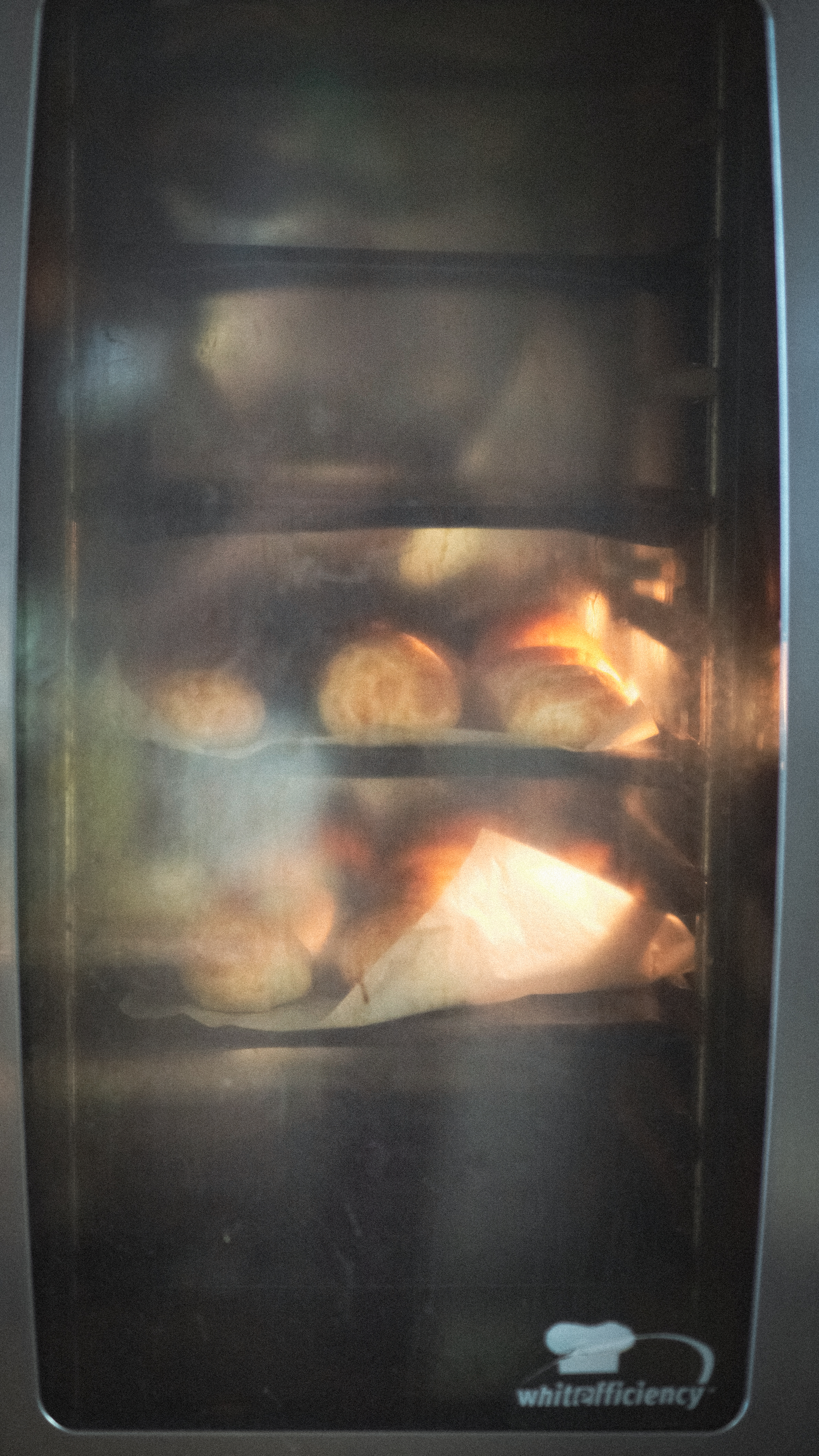
I find myself repeatedly asking the chefs about stress, the very word just rebounding across my brain, as if I were some kind of fly-in poundshop counselor. “The stress is what you make of it,” says KP. There are things that take the edge off: His staff are all “very good”, and have been here a while. The restaurant is “consistently busy”, meaning no surprisingly hectic services. And then everything they make is “spec to the gram, or measured with a ruler – it’s all very precise,” he says.
“Morning chef, how we doing?” says Mik Beltrami, a large cockney-sounding man and professional knife sharpener who’s just popped into the restaurant, and is now standing at the kitchen counter waiting for knives. For discerning customers, he offers on-the-spot knife sharpening services in his van parked outside. Beltrami tells me he got into the trade via his father, who came from Carisolo in the Dolomites, Italy, an area where basically all the Italo knife sharpening artisans were. In the 1960s, he tells me, scores of these young men left the country to avoid national service, taking their knife skills with them. “Go pretty much anywhere in the world—Australia, Canada, America—all knife sharpeners are all from the same sort of area in Italy,” he says.
KP puts an order in over the phone as Beltrami leaves to sharpen the knives outside in his van. Then he asks if the kitchen needs anything else, and they come back with a French-sounding "Non." That’s the other thing about high-level gastronomic kitchens: A lot of it’s in French, specifically the role names, culinary terms and responses to commands.
Despite the amount of people and activity going on, the kitchen is small, with every inch of space utilized—pots and pans hang from walls and there are secret compartments galore. Most spectacular among the gadgets and gizmos is the Rational oven, which costs over $6,000 and can basically do everything. KP starts fiddling with it to show me particular settings, like roast with crackling. Mahalia looks over with mild concern when a warning sound goes off – she has a salt caramel custard tart in there.
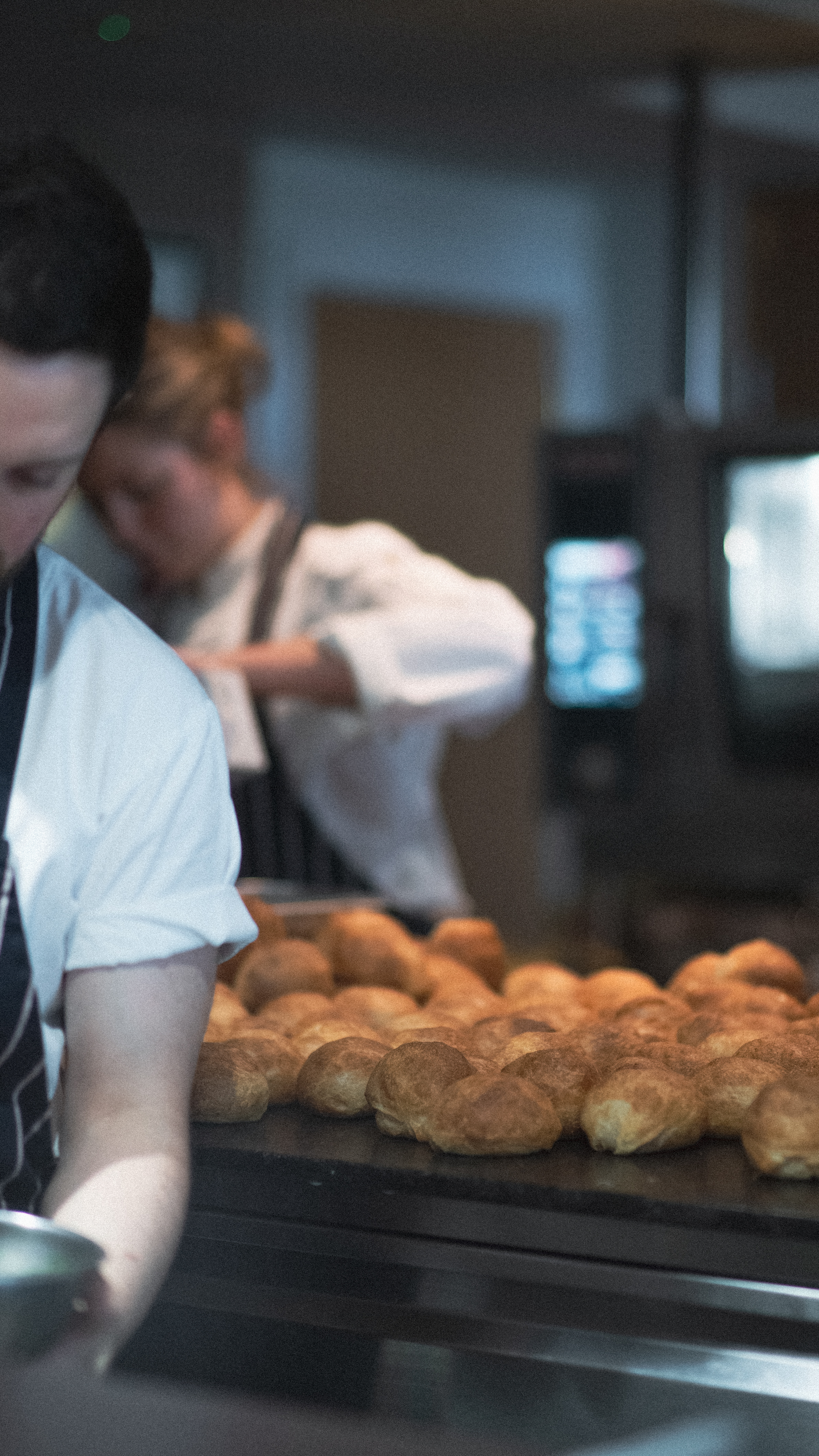
I chat to Morgan, the junior sous, and ask him about sacrifice and missing out on social life. “You have to sacrifice a little bit of that to an extent if you want to have longevity,” he says. You miss birthdays and dinners, he says, because the hours are so long and you often work the weekend. “It’s more like a sports team, where you're trying to achieve something. That's what drives you forward.”
The caviar supplier appears: Harry Ferguson, director of Exmoor Caviar. Once again I am enraptured. Like wine, he says, there are endless iterations of caviar across the world and so you can’t really choose a favorite, but Ferguson says China is “consistently the best” producer. KP opts for half a kilo of the Oscietra—extracted from Russian sturgeon—and Ferguson disappears.
The casually-dressed front of house staff start rolling in, including the Italian-faced Glaswegian restaurant manager, Gav. KP and him try to dap each other up, but fail, then try again. Gav gives me a strong handshake and a toothy smile.
The kitchen is a constant whirl of choreography. At 10.40 a.m., young Ciaran is dripping an oil of some sort into a machine and making taramasalata. KP is on the mains section, chopping shallots lengthways. Morgan is moving a weighing scale. Sam is pushing a great big silver bowl into the fridge, and bringing out a massive saran-wrapped, sausage-shaped galantine of guinea hen and rabbit. Mahalia is slapping and working the dough. There are shouts of “backs” as chefs rush around the obstacle that is me.
When the prep’s over, there’s a massive clean up job. The sections are wiped clean at warp speed. As they get ready for lunch service, huge chopping boards come out and heat lamps are turned on. KP is on the phone, livid about a chicken delivery fuck up. “Today would be great, yeah,” he says. Followed soon after with: “This is your problem, you created it, you need to fix it!” And: “I dont really give a fuck to be honest with you, mate, I need those chickens today!”
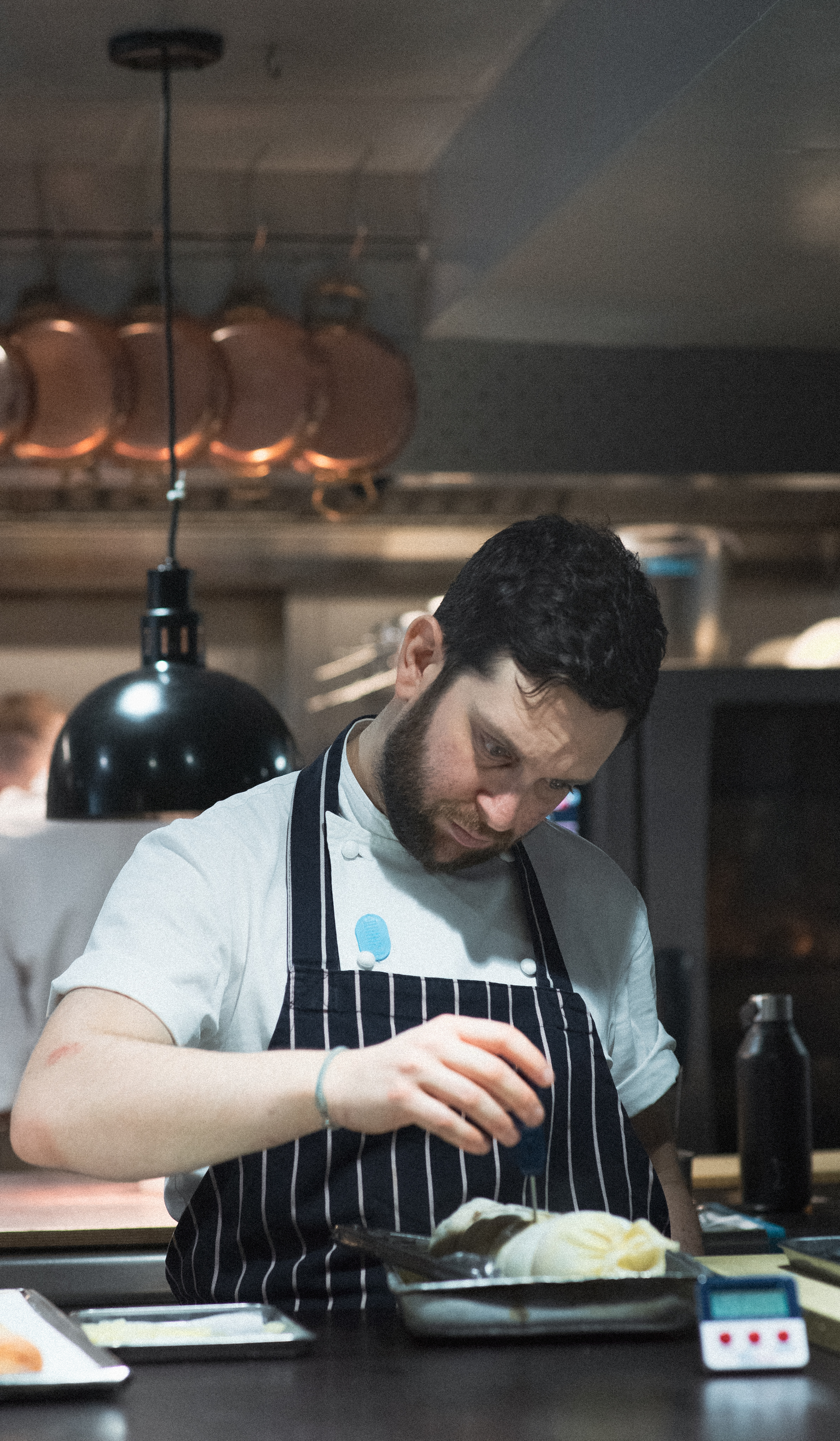
There is a briefing at 11.30 a.m. where everyone involved in the restaurant gathers, and Gav and KP run through all the lunch covers, VIP diners and dietary requirements, before checking in with the team to make sure they have enough food. KP lists off a litany of nightmarish delivery fiascos and Gav cheeringly says “Brilliant!” to each one. When it’s over, Gav shouts “Have a good service!”, to which the chefs loudly shout “Oui!”
KP is running me through the notes the restaurant keeps on guests—anyone who dines has notes. “We’ll know if they're right-handed, left-handed; whether they like still water, sparkling water; what drinks they like; where they've been on holiday. We like to get as much information on the guest as possible, because then it becomes a very personal experience. So you’ll come in, you won't even have to ask for still or sparkling, it will just be there. Your cutlery will be set in a certain way; if you don’t like your napkin on the table, it won’t be there.”
A regular guest who loves crosswords is coming in for lunch, so they need to have a pen ready for him, although they won’t want to jump on him immediately either. Dine here between 10 and 15 times and you’re on bronze, over 25 times is silver, gold is 50 plus, and platinum is over 100. The front of house keeps track of these things. Gav, I note, is ironing the table cloths.
KP is telling me about the importance of positivity in his line of work when a man tries to bring a trolley of supplies through the restaurant and gets it wedged in the entrance. “Buddy, can you be a bit more careful? That curtain cost £5,000,” says KP, chastising the man.
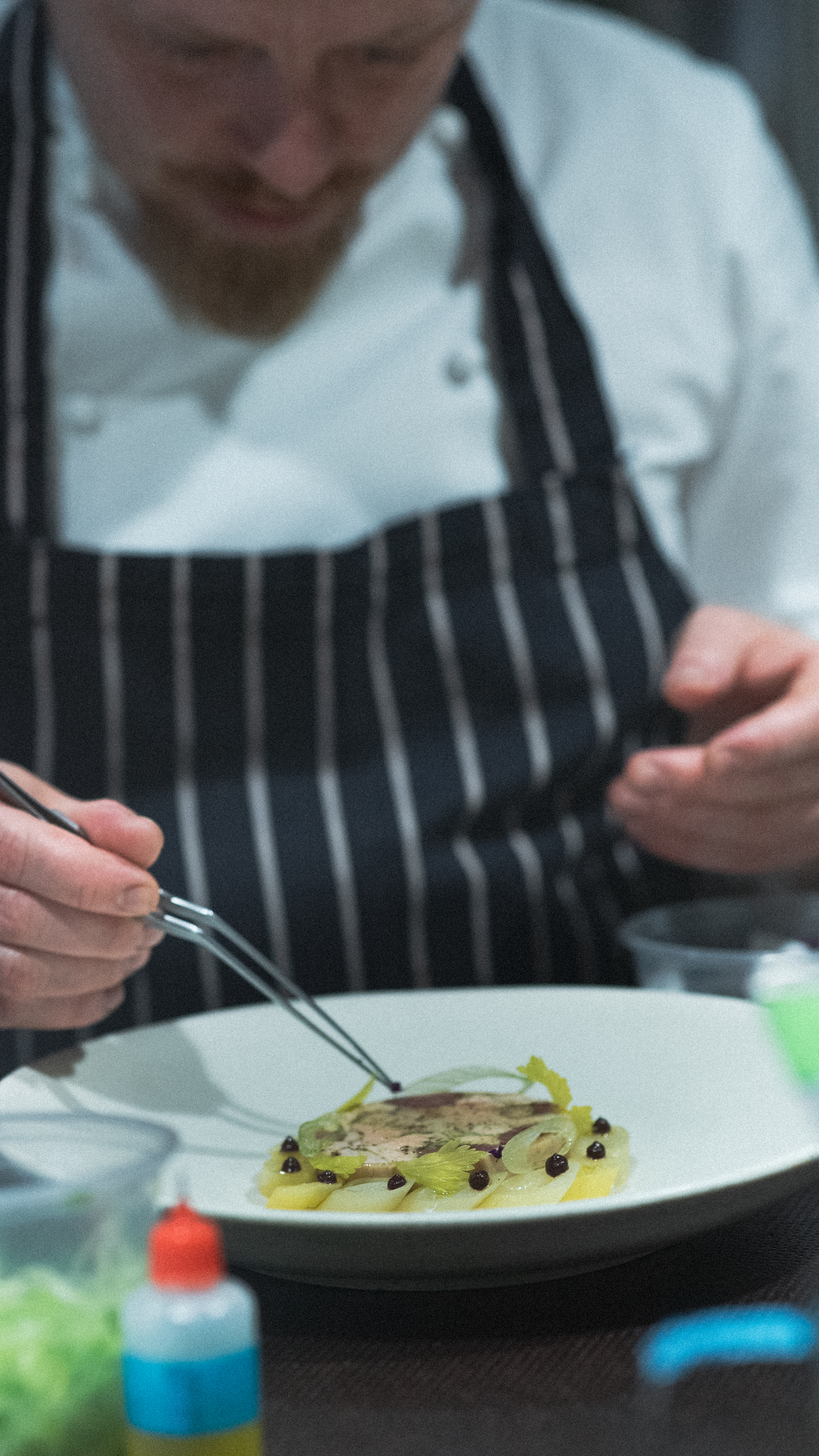
For the next half hour, KP will stand at the mains section and taste every element of every dish. I will stand with him and try stuff too. A few walk-ins trickle through the door, and I start to feel the pressure, vicariously. “Nothing at this point will be wrong, some things will just need tweaking. So adding more lemon juice, more salt, less this, less that,” he says.
Everything I taste is sensational. An indulgent mash that’ll go with the chicken main course; an outrageous trout roe, shallot, chive and pickled dulse seaweed sauce that’ll go with the semi-smoked salmon second course; a heavenly taramasalata; an array of intense splodges including a violet mustard made from spent wine grapes; a wild garlic mayonnaise for a canape; watercress and foie gras puree; and black garlic that’s been stored at 122 degrees Fahrenheit for three months.
When the orders come through the kitchen, KP will read out every dish ordered, and when the chefs have fully digested it, they’ll shout “Oui!” This is “calling on the check”. I ask KP if you need a good memory to be a chef. “Yeah, because when you have 14, 15, 16 tables, there could be 12 to 14 checks on the board, and he's [Chef Morgan] got four dishes, so he’s got salmon, sweetbread, mussel and asparagus, in different stages. I could be like, ‘Morg, you’re away two salmon into one asparagus, one mussel, behind that two mussel, three salmon coming down with a muscle sweetbread coming down.’ And he’ll have all of that logged.” They keep note of the timings of each dish, serving the first course between 8-10 minutes after it’s ordered, and 12-15 minutes for the next courses.
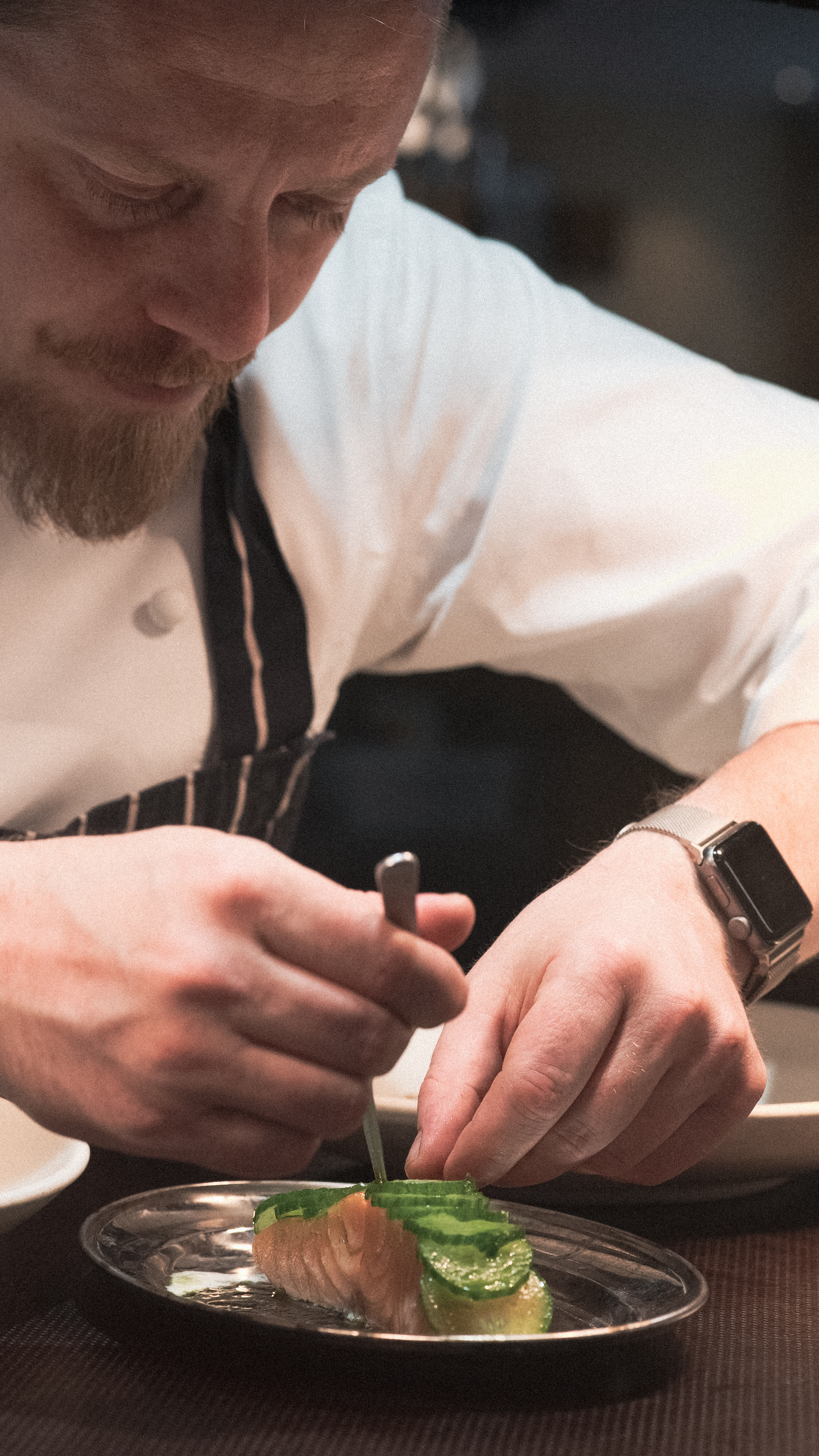
“It’s a very sensory thing,” says KP. “I’ve got to be able to stand here and know everything that’s going on behind me. And you’ve got to notice every little thing… like those tongs are about to fall on the floor, that stove’s not quite clean,” the alarm of a timer starts sounding through the kitchen—“So now there's a timer going off. Those lemons are almost too burnt. Is there a container of pastry brushes on top of the pastry oven behind me that probably shouldn't be there?” There is. “Yeah. So we'll probably have to clean that up. Ciaran, those tongs are about to fall on the floor,”—Ciaran grabs them.
He continues to rattle off information to me while dictating to the chefs around him. “Intensity breeds focus, and being a bit in the shit breeds focus. When cooking at this level, we need to be hyper focused on the seasoning, the temperature, the plates, the cleanliness. At some random point, Sam will just walk around and start cleaning everyone’s shoes.”
“I love it!” Sam says, deviantly.
“We push ourselves to be right on the limit of being in the shit and almost not being ready, because when we’re right on the limit is when we’re most dialed in,” KP says.
Norfolk Ben shows me how they measure the temperature of perfectly cooked meat, which, in this case, is a gorgeous cut of beef, and has an ideal internal temperature of 113 degrees Fahrenheit. He sticks a probe into the meat and then rests it against his lip. As the human body temperature is typically around 98.6 degrees Fahrenheit, the chefs are able to tell whether the meat is slightly cooler, neutral, or warmer than that by the feeling on their lip alone.
I ask KP why they don’t just use a probe that tells them the temperature. “That’s like cooking by numbers, anyone can do that.” He says they use their lips because they’re sensitive, and then puts his hand in boiling water to prove the rumor that chefs’ hands are desensitized. Even when you know something to be true, it doesn't mean it doesn't still shock you when given a demonstration.
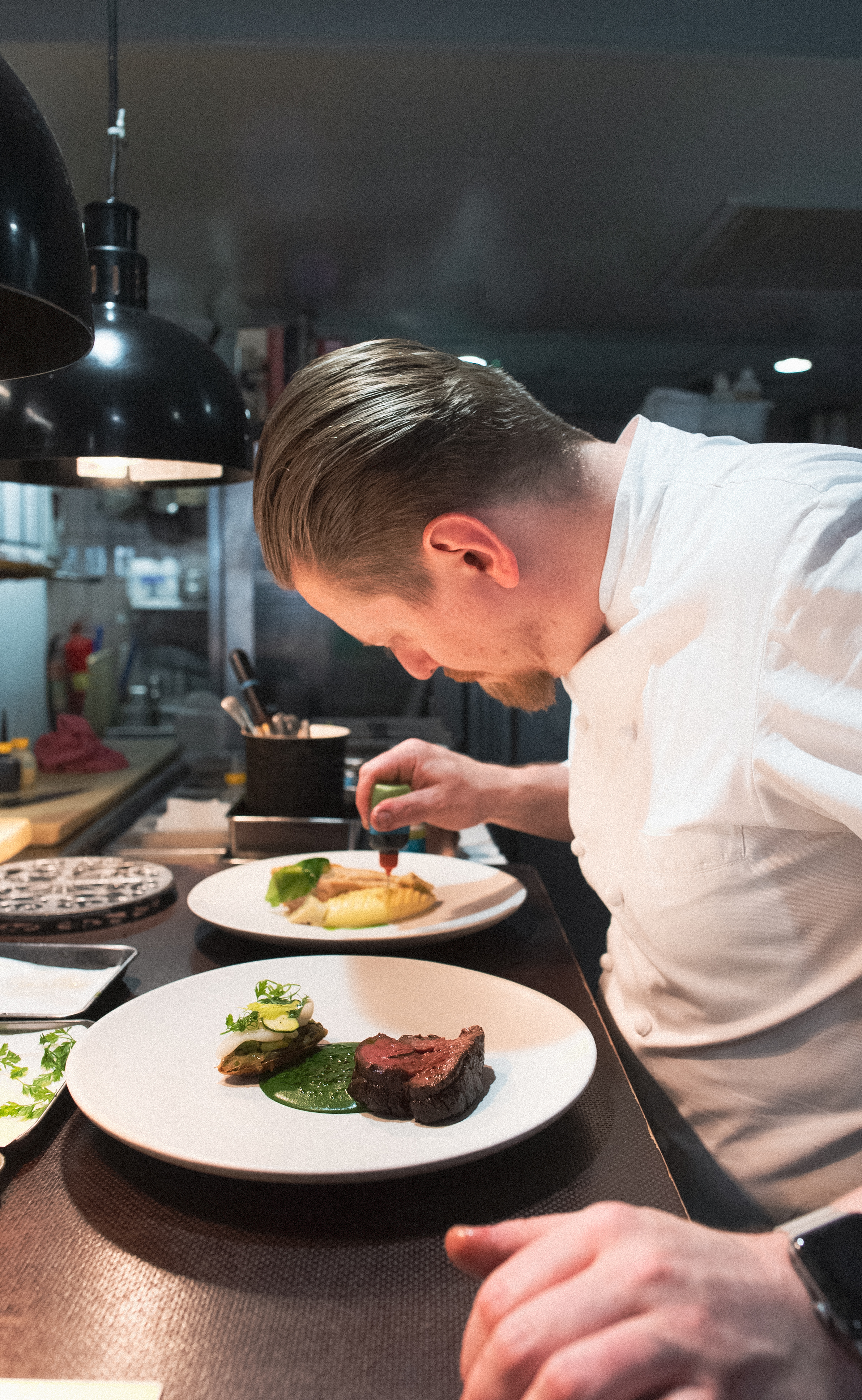
The time has finally arrived for lunch to be served, and the photographer and I take our seats in the restaurant. Everything I'd seen being cooked in isolation backstage starts arriving on our table in dazzling arrays of starters, mains and desserts. We fire in a couple of cocktails too—mine is the rhubarb martini. The owner, Adam Byatt, comes over to our table to introduce himself, and for some reason I start to fumble my words, as if he is some kind of holy dignitary with a divine air about him.
Later, I sit down with Gav. Earlier, KP said it was essential that he and Gav, the head of the kitchen and the front of house manager, were “simpatico” and got on like brothers. They certainly do. He was also the first name KP said when I asked who else I should speak to. Gav, 38, is wearing a blue check tie with a polka dot breast pocket, a navy suit and white shirt. His parents loved restaurants, and he describes himself as “a proper people person”.
I’m curious about always having to be on form, seeing as he and his staff are the face of the operation. “Trust me, it is one of the biggest challenges,” Gav says. He explains how there are safeguards in place, like ensuring they get enough time off work, and should any of his young team need 30 minutes or so “out of the firing line” to reset, he’ll give it to them.
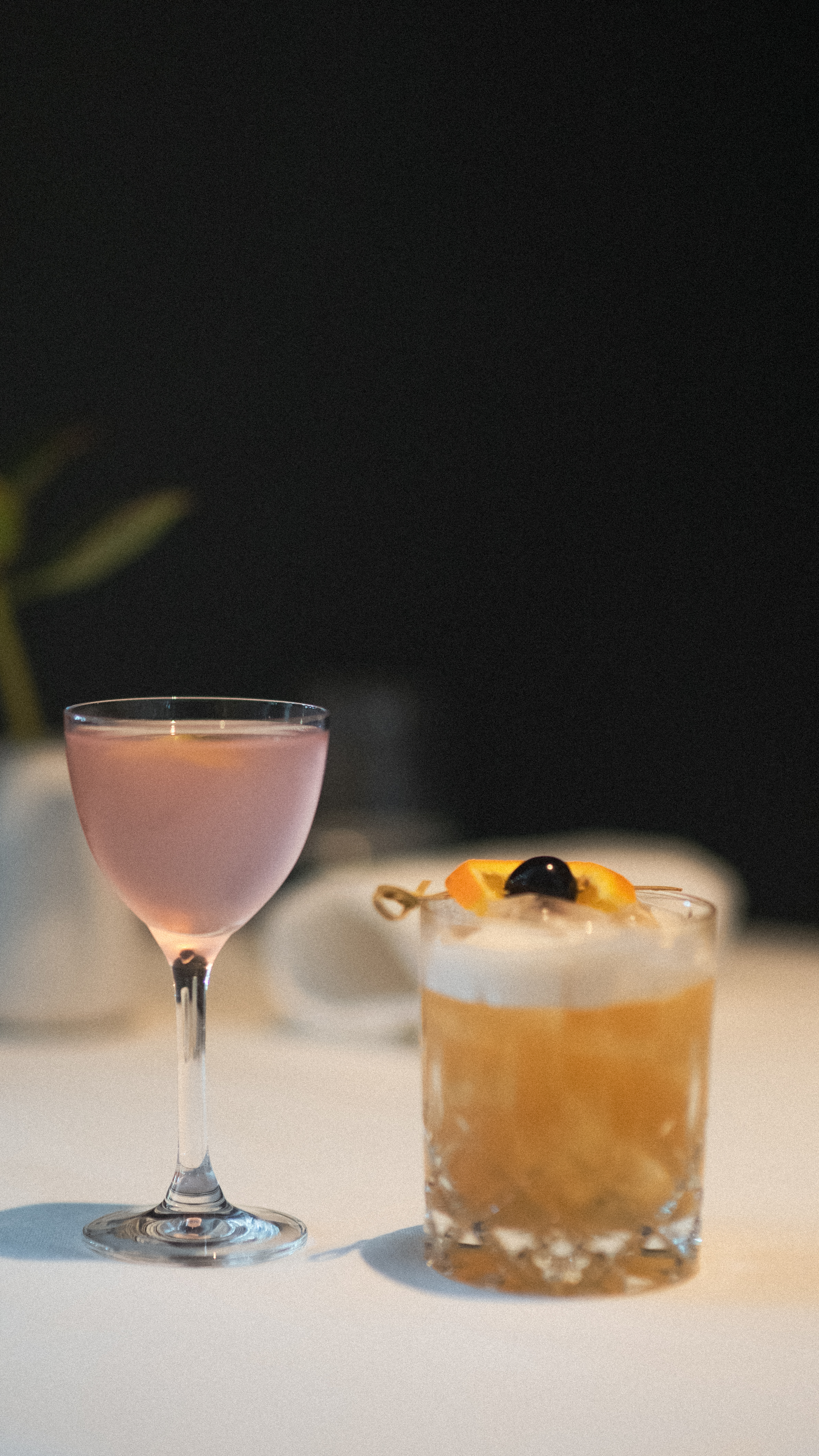
And yet it’s that intensity that gets them going. “You kind of buzz off the craziness and the insanity and the kitchen shouting at you, and there's a guest here, and then there's someone else, and then the phone's ringing. But you're trying to keep it all together and still kind of make it all run quite smoothly,” he says.
“That's the inner spark that I think only people in this particular industry have, that kind of inner fire to always keep it together and just make the magic for the people.”
I head back into the kitchen for one last look around, and find myself standing next to young Ciaran while he slices something cylindrical (it’s parmesan sables). He is a picture of intense concentration, his right eye tightly closed. He’s been here almost nine months, and arrived with no formal culinary education. “He’s fucking killing it,” KP says. “He’s so focused. You could be fucking Jay-Z stood next to him right now, he wouldn’t give a fuck, he just wants to get set for service.”
I stick around to hear the dinner briefing at 5.30 p.m.—this time there’s more staff to handle the busy evening’s service. “Tonight’s another night we need to fucking step up, so that if it is busy—maybe we’re a little bit behind in the kitchen, it feels that way—so let’s just step up, positivity, and fucking smash it,” says KP.
“Well said, young man,” Gav says.
“Thank you, young man,” KP says.
“Have a good service!!” Gav shouts. “Oui!” everyone retorts.
